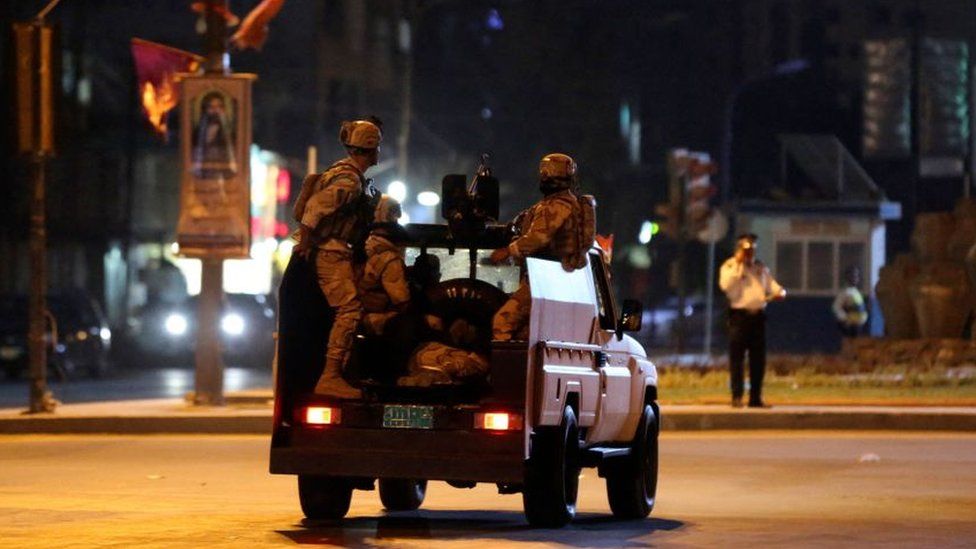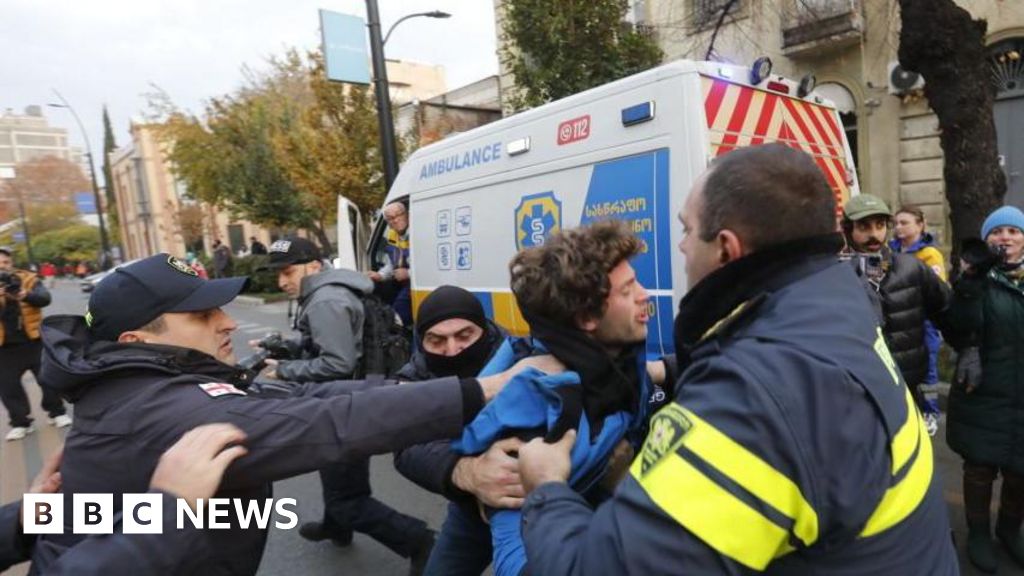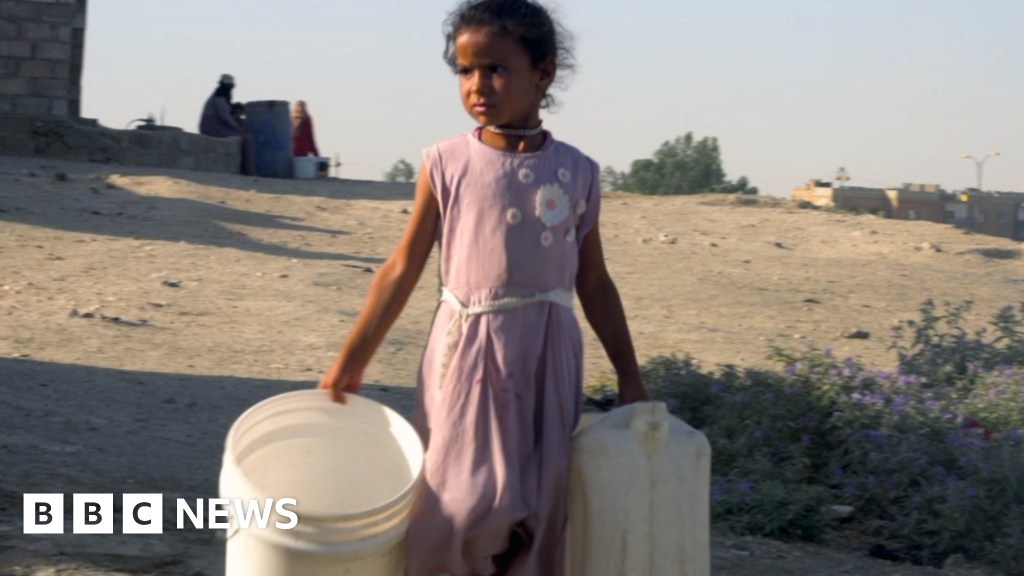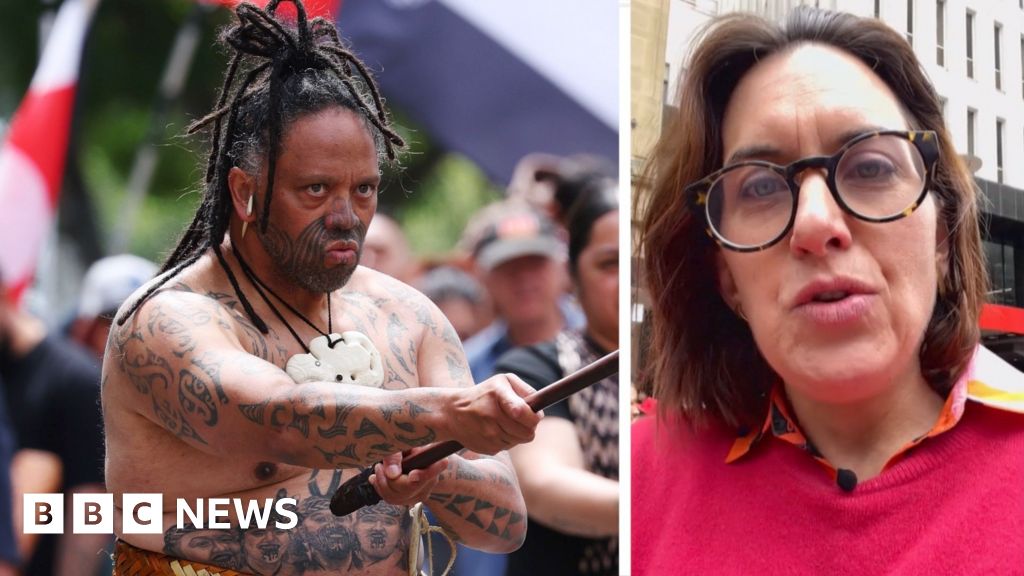ARTICLE AD BOX
By Matt Murphy
BBC News
 Image source, Getty Images
Image source, Getty Images
At least 15 people have been killed as clashes between Iraqi security forces and supporters of a powerful Shia cleric continued in Baghdad overnight.
Officials say dozens more were injured after protesters loyal to Muqtada al-Sadr stormed the presidential palace.
The violence was sparked after Mr Sadr announced his retirement from politics.
Iraq's caretaker prime minister has called for calm and the military has declared a nationwide curfew after unrest in several other cities.
Street fighting erupted overnight, as fighters exchanged gunfire and tracer rounds illuminated the night sky in some of the worst violence to hit the Iraqi capital in recent years.
Much of the fighting has been concentrated around the city's Green Zone, an area that houses government buildings and foreign embassies.
Security officials said some of the violence was between the Peace Brigades, a militia loyal to Mr Sadr, and members of the Iraqi military. Videos shared on social media appeared to show some fighters using heavy weaponry, including rocket-propelled grenades (RPGs).
Iran has closed its borers with Iraq amidst the fighting, and Kuwait has urged its citizens to leave the country immediately.
Medics said 15 supporters of Mr Sadr had been shot dead and about 350 other protesters injured, according to AFP news agency.
A spokesperson for UN Secretary General Antonio Guterres said he was alarmed by events and called for "immediate steps to de-escalate the situation".
And Mustafa al-Kadhimi, the interim prime minister and an ally of Mr Sadr, has suspended cabinet meetings and has pleaded with the influential cleric to intervene and stop the violence.
A senior aide to Mr Sadr later told Iraq's state news agency INA that he had announced a hunger strike until the violence and use of weapons stopped.
It followed a day of violence sparked by Mr Sadr's announcement that he was withdrawing from political life - a move he blamed on the refusal of rival Shia leaders and parties to reform the Iraqi political system.
In October, candidates loyal to Mr Sadr won the most seats in Iraq's parliament, but he failed to secure enough seats to form a government. He has since refused to negotiate with Iranian-backed Shia groups, sparking almost a year of political instability.
Image source, Getty Images
Image caption,The unrest continued throughout the night
Mr Sadr said in a statement: "I had decided not to interfere in political affairs, but I now announce my final retirement and the closure of all [Sadrist] institutions." Some religious sites linked to his movement will remain open.
Mr Sadr, 48, has been a dominant figure in Iraqi public and political life for the past two decades. His Mehdi Army emerged as one of the most powerful militias which fought US and allied Iraqi government forces in the aftermath of the invasion which toppled former ruler Saddam Hussein.
He later rebranded it as the Peace Brigades, and it remains one of the biggest militias which now form part of the Iraqi armed forces.
Although the Mehdi Army had links to Iran, Mr Sadr had latterly distanced himself from Iraq's Shia neighbour and repositioned himself as a nationalist wanting to end US and Iranian influence over Iraq's internal affairs.
The rival Shia political bloc, the Coordination Framework, with which Mr Sadr's bloc has been at loggerheads, mainly includes Iran-backed parties.
Mr Sadr, one of Iraq's most recognisable figures with his black turban, dark eyes and heavy set build, had championed ordinary Iraqis hit by high unemployment, continual power cuts and corruption.
He is one of a few figures who could quickly mobilise hundreds of thousands of supporters onto the streets, and draw them down again. Hundreds have been camped outside parliament since storming it twice in July and August in protest at the deadlock.
Watch: Moqtada al-Sadr supporters storm Iraq's presidential palace after he retires

 2 years ago
43
2 years ago
43








 English (US)
English (US)